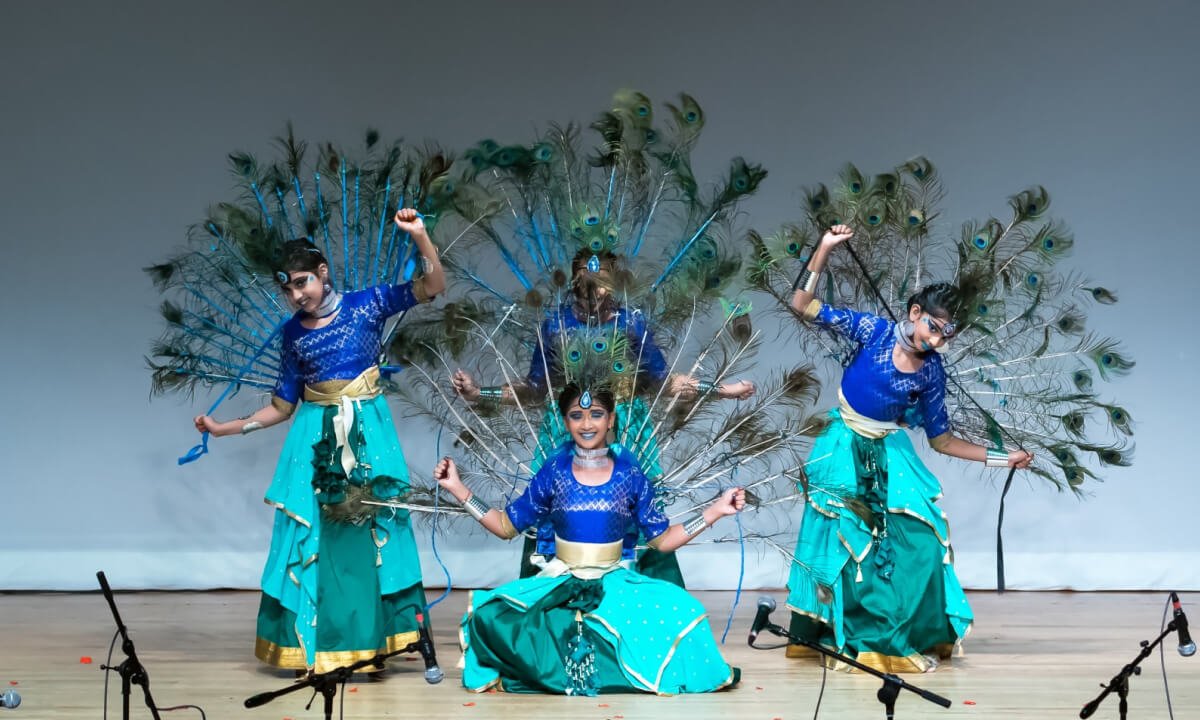folk dance
A peacock dance from Tamil Nadu and Kerala, performed during festivals in honor of Lord Subrahmanya.

Mayilattam, also known as Mayilnrityam, is a traditional South Indian dance with roots tracing back to the Sangam period, spanning from the 3rd century BCE to the 4th century CE. This ancient dance form is a devotional offering dedicated to Lord Subrahmanya, often performed in Hindu temples in Tamil Nadu and Kerala. The name “Mayilattam” translates to “peacock dance,” with mayil meaning peacock and attam meaning dance, symbolizing the divine connection with Lord Muruga, who is depicted riding a peacock as his sacred vehicle.
This dance is commonly performed during Pongal, the harvest festival in Tamil Nadu, as well as during Thaipusam and Kartigaideepam. While Mayilattam has cultural significance, it is more of a ritualistic practice than an entertainment or artistic performance, embodying the devotion of the rural communities who keep this tradition alive.
NSDA students performing Mayilattam on stage.
The execution of Mayilattam is challenging and demands significant skill, strength, and extensive practice. Traditionally performed by rural women, the dancers wear elaborate costumes that mimic a peacock, complete with a feathered tail and a beak in front. The vibrant attire, predominantly in shades of blue, adds to the visual grandeur of the performance. The dancers’ movements closely emulate the graceful motions of a peacock, requiring flexibility, stamina, and agility. Balancing the intricate costume while performing the complex choreography is a feat, as the steps highlight the elegance and spirit of the peacock.
The reverence for the peacock stems from its association with Lord Muruga, making it a symbol of worship in Tamil Nadu and Kerala. Mayilattam is not only rooted in India but has influenced peacock dance traditions across Asia, particularly in Myanmar, parts of Cambodia, West Java in Indonesia, Sri Lanka, and Bangladesh, reflecting the cultural connections and shared symbolism.
A peacock displaying its feathers.
Variants of Mayilattam, such as Kaalia Attam (bull dance), Karadi Attam (bear dance), Aali Attam (demon dance), and Pambu Attam (snake dance), showcase the diversity of animal-inspired dances in the region. These performances are typically accompanied by songs in Tamil and Malayalam, adding to the authenticity and cultural depth of the experience.